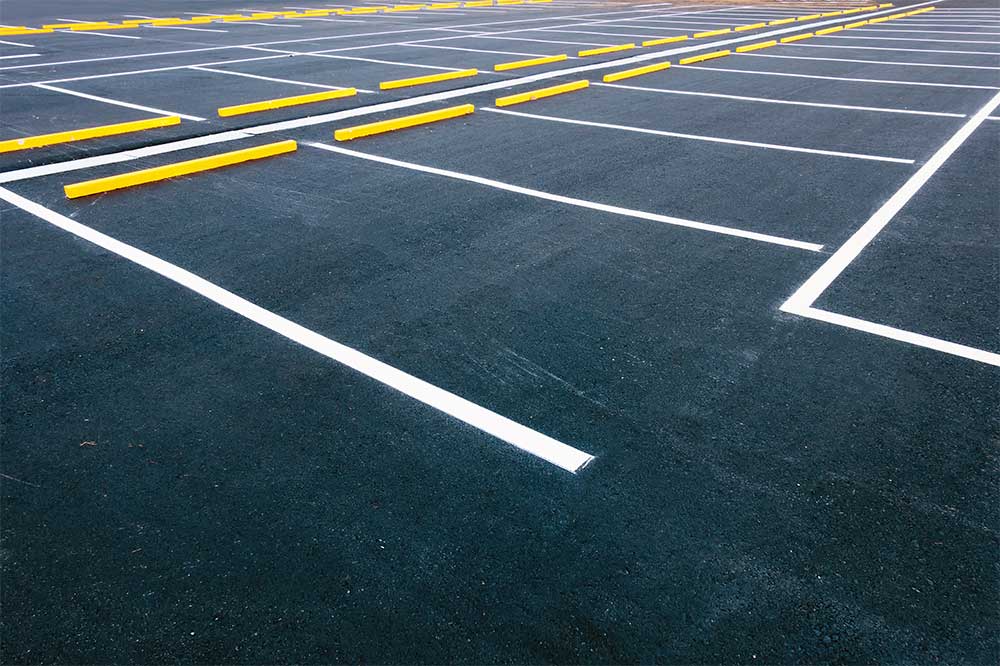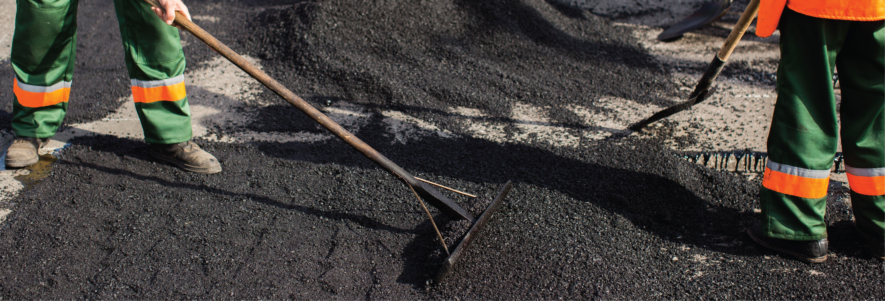Unknown Facts About A1 Professional Asphalt & Sealing Llc
Unknown Facts About A1 Professional Asphalt & Sealing Llc
Blog Article
The A1 Professional Asphalt & Sealing Llc Ideas
Table of ContentsA1 Professional Asphalt & Sealing Llc Things To Know Before You Get ThisNot known Details About A1 Professional Asphalt & Sealing Llc The 45-Second Trick For A1 Professional Asphalt & Sealing LlcIndicators on A1 Professional Asphalt & Sealing Llc You Should KnowAbout A1 Professional Asphalt & Sealing Llc

The oil in a vehicle engine is not simply oil. It has a variety of ingredients to enhance the lorry's performance. These consist of polymers, viscosity modifiers, heat stabilizers, extra lubricating substances, and put on additives. The REOB consists of all the ingredients that were in the waste oil along with the wear steels from the engine (mainly iron and copper).
Nonetheless, by making several blends utilizing various REOB samples and different asphalt binders, the variations largely can be averaged out. Several States gave samples of recognized REOB make-up to TFHRC researchers, who assessed the examples to compare the percentage of included (recognized) REOB to the discovered (examined) amount. The analyses revealed a comparable percentage of added and discovered REOB.
The Basic Principles Of A1 Professional Asphalt & Sealing Llc
None of those States realized that the asphalt they were acquiring had REOB. One State insisted its examples had no REOB - https://dc-washington.cataloxy.us/firms/a1asphaltpro.com.htm.
Of the 1,532 samples checked, 12 percent included REOB, and some consisted of substantially high levels of it at 1020 percent. The greatest degree was 34 percent in a sample from Texas, which TxDOT had actually utilized in a patching compound. This testing additionally revealed the presence of phosphoric acid in 11 percent of the samples, and 2 percent had ground tire rubber.
Two years back at TRB's annual meeting, the Federal researchers held an REOB workshop and presented the searchings for of their lab assessments to a standing room-only group. Although some agencies do not especially outlaw REOB, they do impose physical tests that avert its useeffectively a restriction. diagonal parking vs straight parking. Others do not ban it by requirements, but have contracts with asphalt distributors to avoid the use of REOB
Indicators on A1 Professional Asphalt & Sealing Llc You Need To Know
A handful do permit REOB, some within particular limitations. For instance, Ohio and Texas limit levels to much less than 5 percent of the asphalt. To establish a reliable test method that all States can use, the TFHRC scientists established a round-robin examination strategy. The individuals are 11 State freeway agencies (Illinois, Massachusetts, Minnesota, Mississippi, Montana, North Carolina, Oklahoma, South Carolina, Texas, Vermont, and Wyoming), 2 independent testing labs, the Ministry of Transport in Ontario, Queen's University in Ontario, and an Ontario paving professional.
The participants are examining the samples independently utilizing the standards provided by the TFHRC researchers. The output will be a proposed AASHTO examination technique that any type of State can embrace and utilize.
The sidewalk with REOB, which lies 0.6 mile (1 kilometer) from the pavement without REOB, has the same subgrade, traffic thickness, and environment. However, the sector of Highway655 with 5 to 10 percent REOB showed significant splitting. In this instance, the existence of REOB was the recognized cause of fracturing at a low temperatures.
"In our experience in copyright, also small amounts of 23 percent can be an issue." An area of test pavement in Minnesota (MN1-4) discovered to include REOB additionally cracked too soon. The pavement executed well for the first 3 to 4 years, yet then began to split. This sidewalk is likewise based on low temperature levels.
Some Known Facts About A1 Professional Asphalt & Sealing Llc.
The tests were not comprehensive, however they showed that at levels of 6 percent or more, the tensile strength of the asphalt dropped considerably. At a level of 3.5 percent REOB, the variation in the physical test methods was higher than the effect of REOB. Actually, it was challenging for researchers to assess whether REOB was present.

One binder parameter thought about is the difference between the low temperature vital spec temperature for tightness (S) in the bending beam rheometer and the bending beam rheometer creep incline (m-value) kept in mind as Tcritical. TC = TC (S) TC (m-value). Analysis of this criterion is still recurring. 2 independent research study teams, one from AASHTO and the other from the Asphalt Institute, concluded that even more research study is needed on using REOB in asphalt.
Previously, all asphalt testing measured design residential properties such as tightness. These tests do not reveal what products had actually been contributed to the asphalt. One example received during the TFHRC research had an extremely odd analysis. The sample had the complying with test outcomes: Superpave PG 64-28 with a heat quality of 67.3 Tcritical on the bending light beam rheometer was 6.7 degrees Celsius.

9 Easy Facts About A1 Professional Asphalt & Sealing Llc Explained
These outcomes show there are weak points in the standardized design testing procedures that may be exploited. The producer might have a financial advantage and the product passes all the standardized tests, but the item might not be valuable to making certain lasting efficiency. To address this issue and the expansion of brand-new asphalt ingredients and extenders, TFHRC is beginning a research study continue reading this program to utilize handheld spectroscopic tools, x-ray fluorescence spectroscopy, and Fourier change infrared spectroscopy to allow analyses to be done in the area as opposed to having to take examples back to the lab.
Report this page